The Power of Purpose in the Workplace
The power of purpose in the workplace is something we’ve been exploring a lot lately at Sanctus, so we organized our first Leaders’ Breakfast Roundtable with HR and L&D leaders and panelists Dr Albert Viljoen, Organizational Development Consultant and Coach at Sanctus; Al Bird, CEO at Sanctus; Ed Johnson, CEO at PushFar; and Kerry Coxon, Director of People and Organizational Development at Roffey Park Institute. If you would like to be notified of future events, you can sign up to our Leaders’ Purpose Network here.
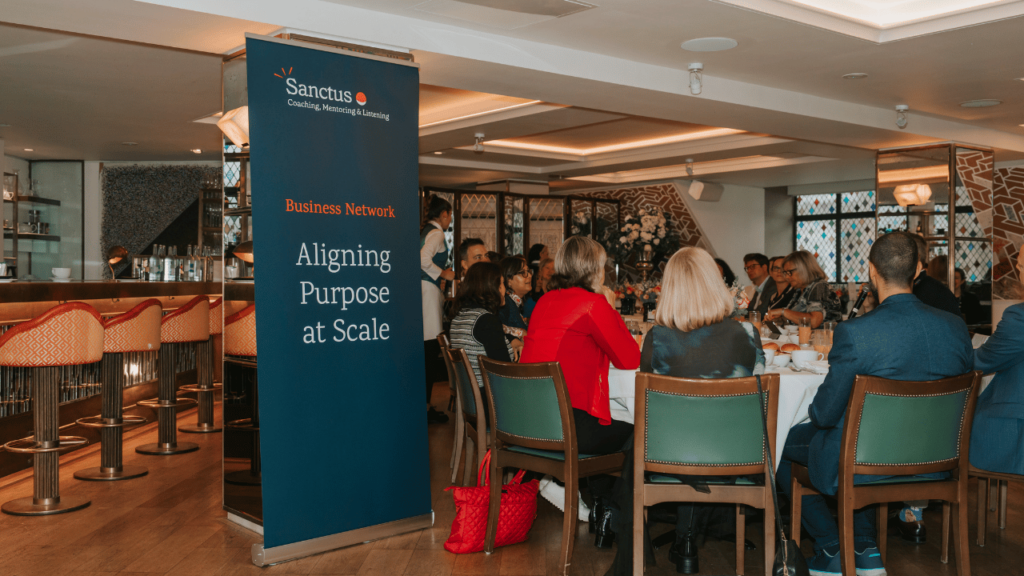
Takeaways
- Purpose needs to be driven from the bottom up. It affects those at the bottom of the ladder the most. That’s where most companies suffer from attrition. Clients suffer too.
- Psychological safety, and opening the floor to more voices, is key. How can you get more people involved in important conversations?
- Little things can cause blocks. Consider how to understand these points of friction and what to do to overcome these things so that they don’t get in the way of the bigger picture.
- Clear communication is vital. Companies need to be accessible and inclusive and ensure it’s easy for employees to grasp how what they do makes a difference.
- Leaders need to demonstrate the right behaviors consistently and be accountable.
- Data is key to building a compelling narrative that informs initiatives, interventions, and strategic direction. It can also show you if you’re moving toward an increased sense of purpose.
Start with why
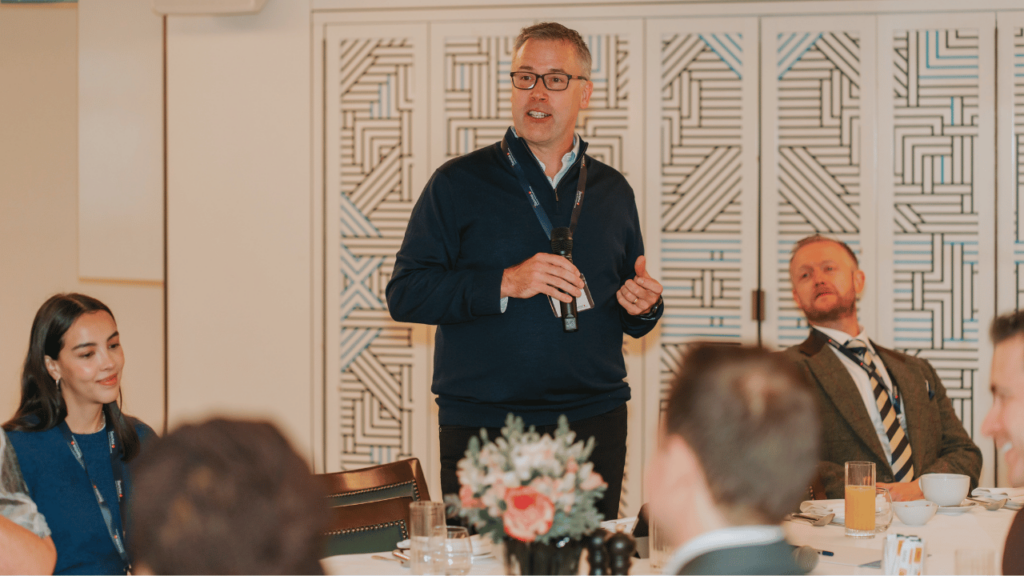
Purpose speaks to our why. Why are we doing this? Why are we on this planet? Why are we here today?
Employees want to know how their input affects the company. If they don’t understand this, it can lead to disruption, discord, and disengagement.
On the flip side, if people do understand why they do what they do, it can drive their sense of belonging. Not to mention engagement, retention, and profits.
So how can an individual find purpose while working toward company goals? First, they need to understand what the company goals are. Then, they need to ensure what they’re working on aligns with the broader business goals. Leading to happier employees who achieve more.
Mentoring and coaching can offer accountability for aligning and achieving goals, overcoming communication issues, and resolving any problems that arise.
Imagine you’re running a marathon. When you start telling other people you’re going to run a marathon, it puts positive pressure on you to do it. That positive pressure and accountability give you a sense of purpose to continue your growth.



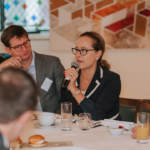
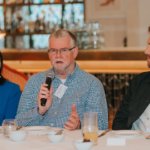


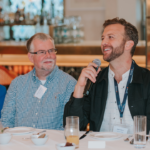

Generational differences
“Purpose” means different things to each generation, and each generation has different expectations of its own purpose and individual identity.
Gen Z is very clear on what they want to achieve and on their values. They’re value-driven. Businesses need to understand how to balance that with the existing company culture to attract and capitalize on Gen Z’s energy and excitement.
Individuals need to do their own research into company’s cultures to see if it aligns with what they want now and in the future. They have to find ways to balance the need to offer value to the world with making a living, especially when for those frontline workers who live paycheck to paycheck.
Understanding company purpose

Many companies aren’t aware that they need a purpose. It’s also easy to talk about in theory but harder in practice. It’s an existential question that can often take a full day of coaching to explore even just with individuals.
Company away days or off-sites are often used to crystalize discussions and agree on purpose, particularly if staff no longer connect to it or the language needs clarifying. In the past, this was limited to leadership teams but nowadays it often requires the input from employees so that they align with the new direction and don’t feel left behind. Sometimes it’s also a case of not what your purpose is, but how you deliver it that changes.
When a company reaches a new stage, or a merger happens, it can fundamentally change the fabric of an organization. So it’s important to slow down and get people to realign with the purpose, or reevaluate what it is.
Little things can often cause blocks. For example, if two companies merge, what headshot style will everyone use going forward? Does the company want to be more fun or corporate? These small things show company values and send a clear message to employees and clients.
Aligning individual and organizational purpose

Most of us overcomplicate purpose. It’s often small, simple practices that give you the space to consider why you’re doing something.
For some companies, it could be the case that purpose doesn’t shift, but how we deliver it changes. Or our values might change, particularly in older organizations. But at its heart, the organization is the same.
Sometimes, an organization is clear on their purpose, but the world around them has changed, so they have to reevaluate. The changes in the sector may then be at odds with the purpose many people signed up for.
Generally speaking, people join an organization because they believe their purpose aligns with the organization’s purpose, particularly if they’re Gen Z. If the company purpose changes, it’s up to that person to decide if they want to stay. The company can coach them through it, investigate it, ask questions, make sure everyone is clear on the new direction. But at the end of the day, people have to ask: “Does this align with where I want to be?”
Organizations need to give individuals the opportunity to develop a sense of purpose, too. That’s why coaching and mentoring are so valuable—they allow individuals to have time with a mentor or coach to focus on their own development. It’d be great if every outcome aligned with the organization’s purpose, but how often will that actually happen?
Employers need to inspire employees with the correct purpose, but it’s not something they can give. It’s a two-way street.
Individuals must come to terms with their evolving purpose over time. They need to identify their personal values that align with who they want to work for. These are skills that aren’t easy to teach, but organizations can support them through ongoing professional development.
People can work for somewhere with a different purpose to their own—what matters is that the company’s purpose and employee’s purpose align. Like in a Formula 1 team, can you guarantee every one of the thousands of employees in every single team cares about winning the championship? Does it matter?
When organizations invest in individuals to find their purpose, even if it’s different, it shows they understand the human side of the equation.
The levels of purpose and their benefits
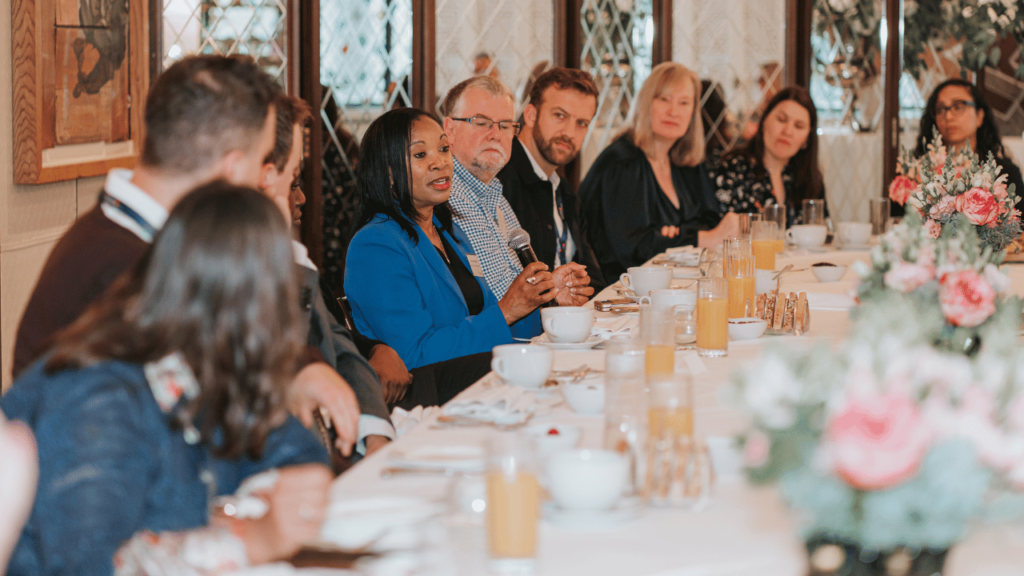
There are levels of purpose, such as individual purpose, team purpose, and project purpose. Working out the level of purpose you’re working at can allow for rich conversations where everyone starts thinking about design and innovation more effectively.
Different lenses can be applied to purpose, too: colleague lens, client lens, community lens. All these perspectives are powerful and change how we communicate.
Purpose can also shift based on context. For instance, sometimes it’s more about the purpose someone gets from their role or function. The purpose of finance is to keep the business going financially, for example.
Sometimes pulling people back to the question of what purpose is can be helpful to achieving a goal or getting a meeting back on track. If everyone is there for the same reason, it allows the conversation/project to move forward.
Take the NHS as an example. It’s fragmented. Even between the same trust there can be different cultures between doctors, nurses, and managers. However, the purpose is the same and this enables the organisation to move the conversation forward and get everyone aligned.
Employer value propositions and shifting purposes
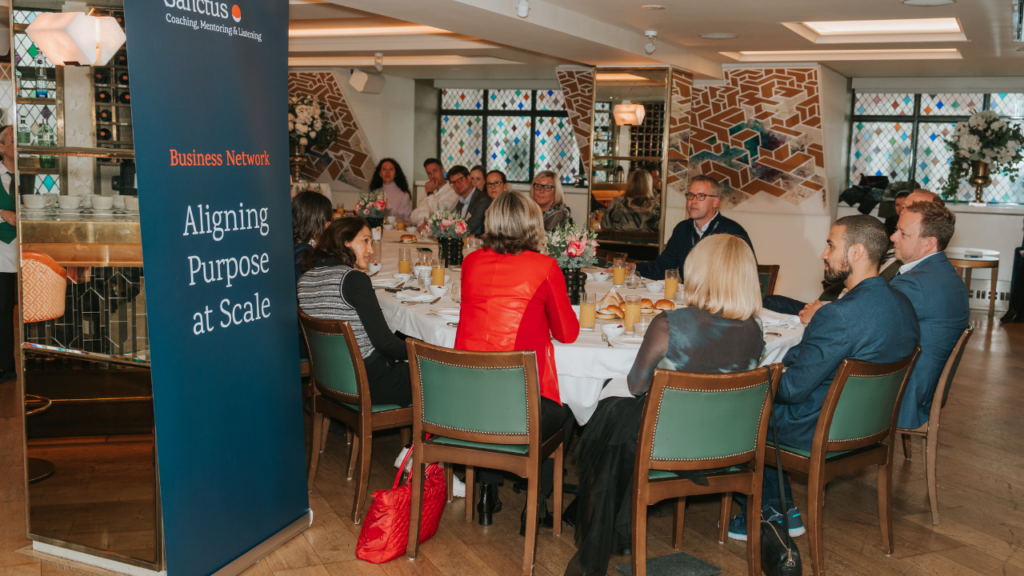

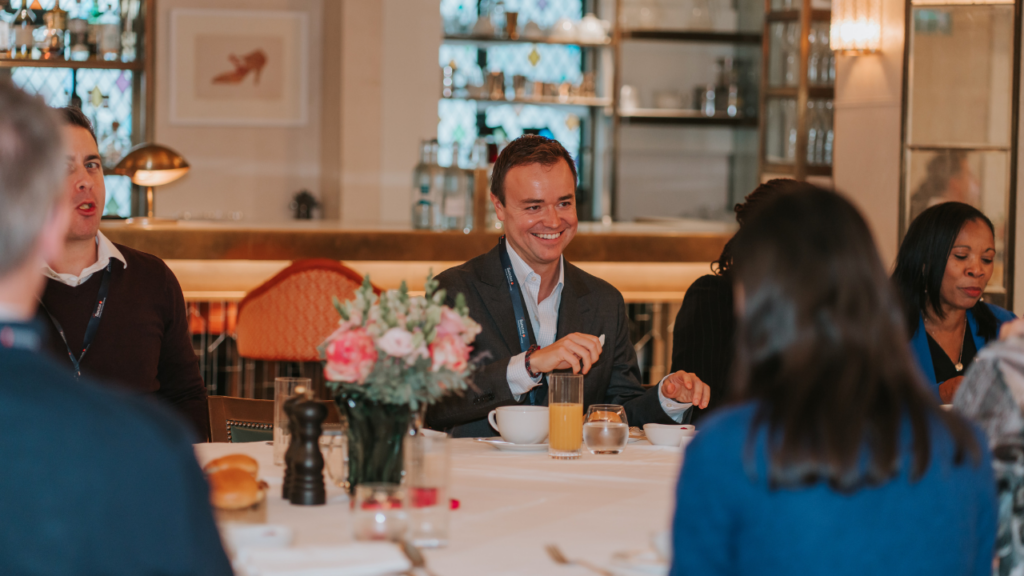
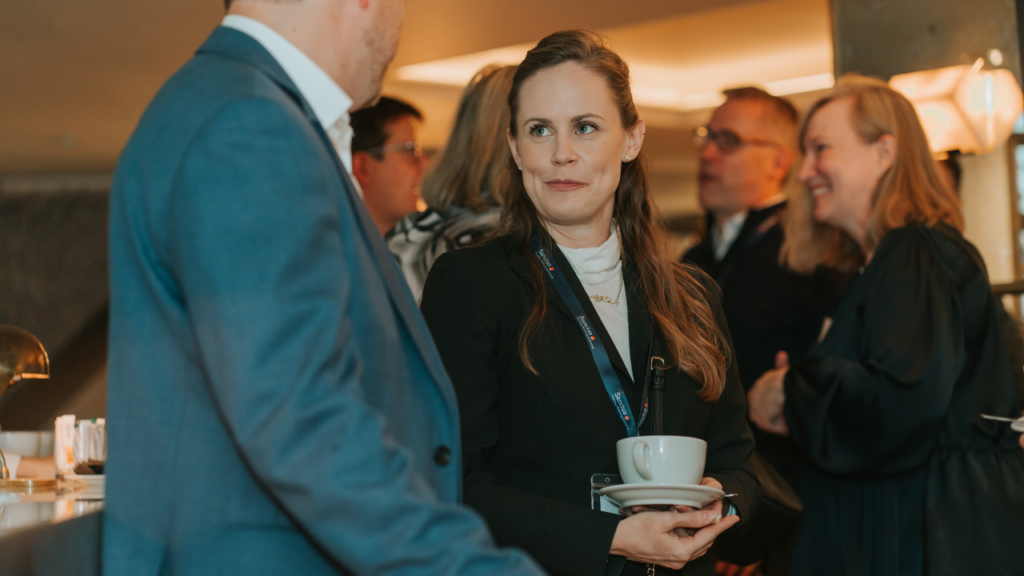
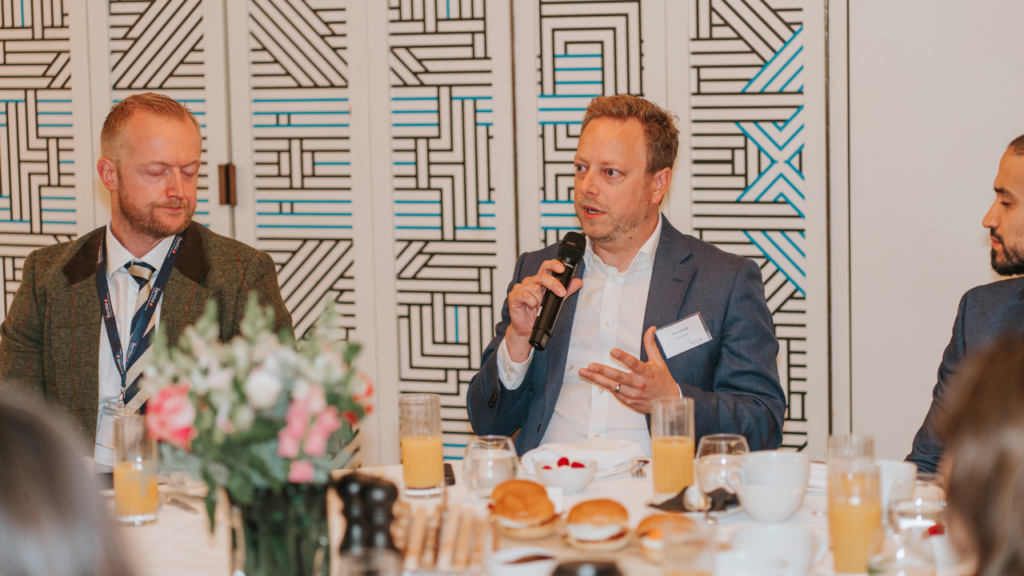
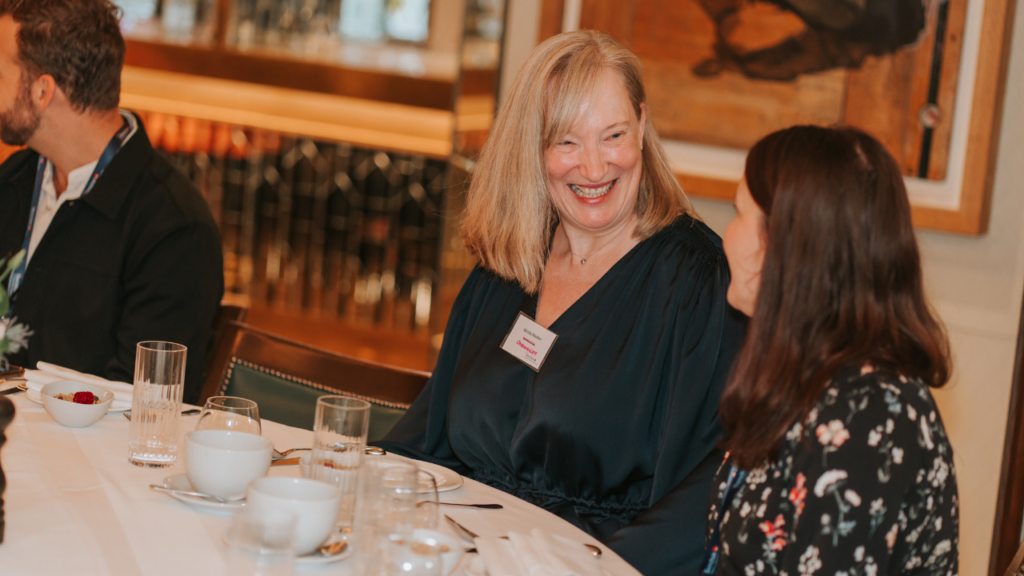
Employer value propositions (EVP) need to be deliberate. What do people get from working with your organization? What do you have to offer them in return? They can use that information to decide if a company is or isn’t for them.
There’s a right job and company for everyone, just the same as there’s a wrong job and company for everyone. It’s ok—and possibly even better—to be intentional, clear, and unapologetic about your EVP. It will help candidates decide if your company is for them.
Sometimes, employees feel demotivated because they don’t understand what they’re meant to do. Mentoring and coaching can help them understand their strengths and realign their purpose so they know what direction to take. This can help employees going through transitional phases see that they’re still valued.
For example, when someone becomes a mother, it can change their purpose. This can change their approach to life and work. That doesn’t mean someone has to change their job. Instead, it means conversations need to be had, and a balance needs to be found. Coaching can help new and returning parents work through these shifting responsibilities.
The role of leadership, communication, and empathy in purpose

People care about purpose. Machines don’t. Capital doesn’t. But it can make a difference to us as human beings.
Communication is key. So too, is empathy.
For instance, getting healthcare providers in a room to imagine what it would be like for a patient going through treatment can help them empathise with patients. This can totally change their perspectives and lead to new ways to solve problems.
At Sanctus, we allow people’s humanity to shine through while bringing our best selves to work via check-ins at the beginning of a meeting. We discuss how we are now and can share as much or as little as we like. This brings us back to people being themselves at work and allowing humanity to show up, even when machines can sometimes overshadow it.
Leaders set an example, but they also need to listen. There has to be a safe space for open dialogue and employee input. Leaders should also be held accountable to model and live the company values and purpose in how they show up to work and their decisions.
Data-driven purpose
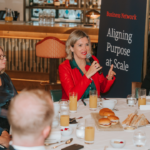


Storytelling is great, but data offers a clear way to measure purpose and company direction. It turns something that can be obscure into something tangible with measurable outcomes.
Sometimes, the purpose has always been there, it was just harder to see because there was nothing concrete to demonstrate it.
Data demonstrates the patterns behind what you do. For instance, it can help to ask people, particularly in underrepresented groups, what they hope to gain from different learning initiatives. And consider what sort of evaluation you need to put in place to show that.
Then there’s getting an individual who’s gone through an initiative to show how it affected them. These types of case studies add a human element—a story—to your data. The data adds gravitas to the story, while the story gives us something emotional to connect to.
You can translate the data to find patterns and connect stories to those patterns. Together, they’re an almost unstoppable combination.
Sometimes, seeing the value we provide can be somewhat obscure. Combining data and stories helps you understand someone’s purpose in the organization and allows you to measure what works and what doesn’t.
The power of purpose in the workplace
Depending on who you speak to at an organization, purpose can mean different things. It could alsorefer to company purpose, employee purpose, team purpose, environmental purpose, and more depending on the context. We must consider how we bring those things to life in a way that they align and how we bridge the gaps.
Regardless of how someone interprets the world, everyone plays a role in contributing to an organization’s purpose.
Data, acquired from things like staff surveys, helps to form a compelling narrative and measure whether a company is on the right track.
Leadership accountability, meanwhile, gets everything moving in the right direction. Leaders need to consider what metrics they want to impact and improve, then track that to inform the narrative and direction.

